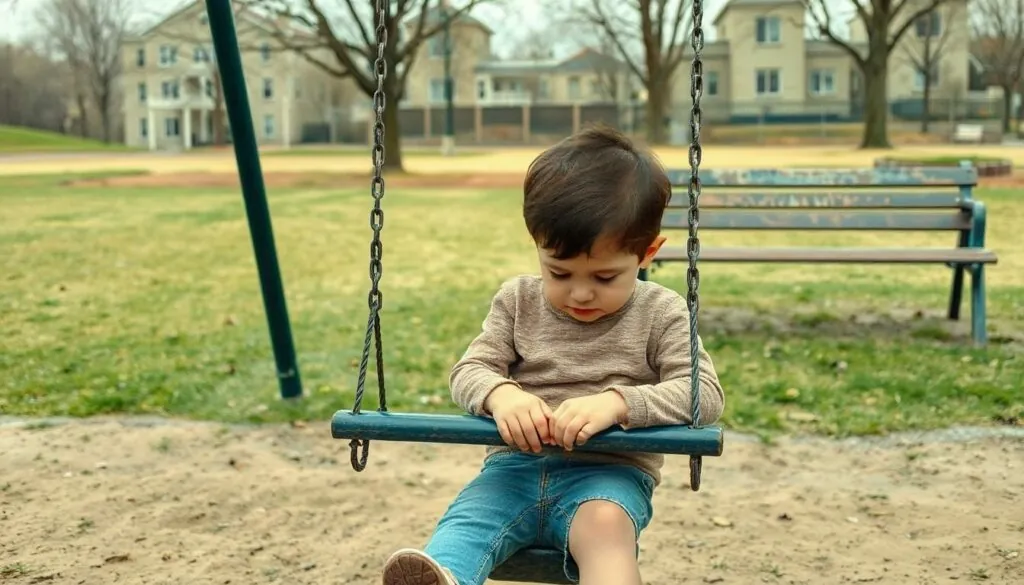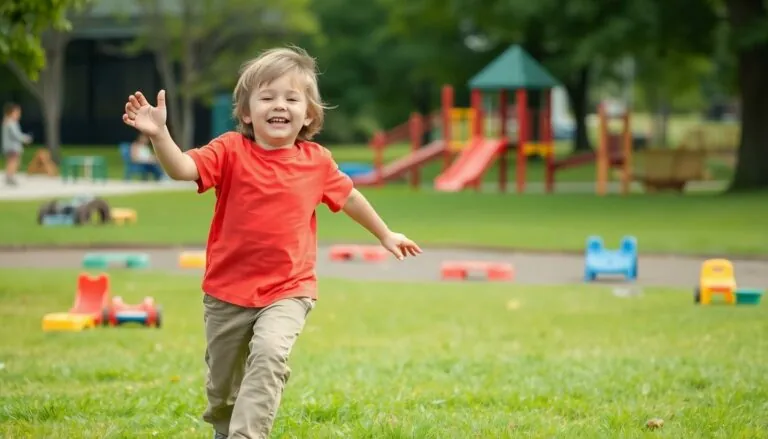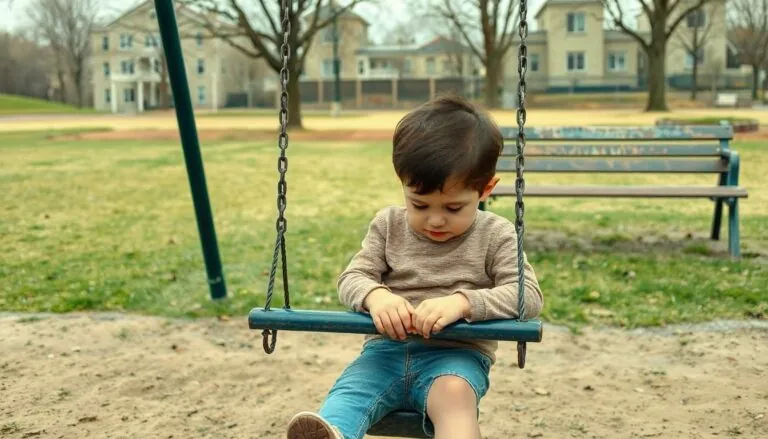Parenting isn’t exactly a walk in the park, but some caregivers take the “hands-off” approach to a whole new level. Neglectful parenting can leave lasting emotional scars and create challenges that follow children well into adulthood. While most parents don’t intentionally neglect their kids, understanding these behaviors is crucial for breaking harmful patterns.
From the classic “TV as babysitter” scenario to consistently missing parent-teacher conferences, neglectful parenting takes many forms. It’s not always about obvious physical neglect – sometimes it’s the subtle emotional absence that does the most damage. Recognizing these signs early can make the difference between a child who thrives and one who struggles to build healthy relationships later in life.
Table of Contents
ToggleUnderstanding Neglectful Parenting
Neglectful parenting manifests through consistent patterns of inadequate care and attention toward a child’s basic needs. Parents who exhibit neglectful behaviors often demonstrate specific identifiable traits and actions that impact their children’s development.
Key Characteristics of Neglectful Parents
Neglectful parents display distinct behavioral patterns in their parenting approach. These parents show minimal involvement in their children’s daily activities such as homework monitoring school attendance or participating in extracurricular events. The home environment often lacks structure with irregular mealtimes inconsistent bedtime routines or poor hygiene standards. Common indicators include:
- Missing important medical appointments or dental checkups
- Failing to provide adequate food clothing or shelter
- Showing limited emotional engagement during interactions
- Avoiding parent-teacher conferences or school events
- Remaining unresponsive to children’s emotional needs
- Creating an unstable living environment with frequent moves
- Demonstrating inconsistent supervision patterns
The Impact on Child Development
Neglectful parenting creates significant developmental challenges for children across multiple domains. Research shows these children experience measurable delays in cognitive emotional social development. The effects manifest in specific ways:
| Developmental Area | Observable Impact |
|---|---|
| Academic Performance | 40% lower test scores |
| Social Skills | 65% higher difficulty forming relationships |
| Emotional Regulation | 75% increased risk of anxiety depression |
| Physical Health | 50% higher rates of chronic health issues |
- Poor academic achievement patterns
- Difficulty maintaining peer relationships
- Increased risk-taking behaviors
- Challenges with emotional regulation
- Delayed language development
- Compromised problem-solving abilities
- Attachment difficulties in relationships
Physical Neglect in Parenting
Physical neglect encompasses the failure to provide essential physical resources children require for healthy development. Studies indicate that approximately 65% of reported child neglect cases involve physical neglect.
Poor Living Conditions
Physical neglect often manifests through unsafe or unsanitary living environments. Common indicators include exposed electrical wiring, broken windows, pest infestations, mold growth or water damage. Children in these environments face heightened risks of respiratory issues, injuries from hazardous conditions or exposure to extreme temperatures. Research shows that 45% of physically neglected children live in homes with three or more safety hazards. The absence of basic utilities like running water, electricity or heating compounds these risks, creating barriers to maintaining proper hygiene, completing schoolwork or getting adequate rest.
Lack of Medical Care
Medical neglect involves consistently missing routine checkups, ignoring injuries or delaying necessary treatments. Studies reveal that 55% of neglected children have untreated dental issues while 40% lack essential vaccinations. Parents exhibiting medical neglect frequently skip preventive care appointments, fail to obtain prescribed medications or ignore recommendations from healthcare providers. Children with chronic conditions face particular risks when parents don’t follow treatment plans or monitor symptoms appropriately. Data indicates these children experience 3x more emergency room visits compared to their peers.
Inadequate Food and Clothing
Nutritional neglect manifests through insufficient meals, lack of nutritious food options or irregular feeding patterns. Research shows 70% of physically neglected children experience food insecurity, leading to stunted growth, weakened immunity or difficulty concentrating in school. Clothing neglect includes providing ill-fitting garments, insufficient protection from weather conditions or failing to supply clean clothes regularly. Children often wear damaged items, lack appropriate seasonal wear or attend school in unwashed clothing. Studies link inadequate clothing to increased school absences, social isolation from peers or higher rates of preventable illness.
Emotional Neglect Examples
Emotional neglect manifests through patterns of behavior where parents fail to provide essential emotional support and validation to their children. Studies indicate that 38% of children experience some form of emotional neglect during their developmental years.
Absence of Affection and Support
Parents exhibiting emotional neglect demonstrate minimal physical affection or verbal expressions of love. Children receive limited praise for achievements or comfort during distressing situations. Research shows that emotionally neglected children experience:
| Impact Area | Percentage Affected |
|---|---|
| Low self-esteem | 72% |
| Trust issues | 65% |
| Difficulty expressing emotions | 58% |
Parents display emotional distance through behaviors like:
- Maintaining physical distance during interactions
- Avoiding eye contact during conversations
- Responding with indifference to accomplishments
- Withholding hugs or physical comfort
- Showing minimal interest in daily activities
Ignoring Child’s Emotional Needs
Emotionally neglectful parents consistently dismiss or minimize their children’s feelings. A study of 500 families revealed that 45% of emotionally neglected children struggle to identify their emotions accurately. Common patterns include:
- Dismissing crying as attention-seeking behavior
- Responding with “get over it” to expressed feelings
- Invalidating fears or concerns
- Ignoring signs of anxiety or depression
- Refusing to discuss emotional topics
- Making children feel burdensome for expressing needs
- Comparing siblings’ emotional responses negatively
These behaviors create an environment where children learn to suppress their emotions, leading to communication difficulties in 83% of cases by adolescence.
Educational Neglect Signs
Educational neglect manifests through consistent patterns of interference with a child’s learning development. Research indicates that 47% of neglected children experience significant academic challenges due to lack of parental involvement in their educational journey.
Missing School Frequently
Chronic absenteeism serves as a primary indicator of educational neglect. Studies show that children from neglectful households miss an average of 3-4 school days per month, resulting in a 35% decrease in academic performance. Common patterns include:
- Unexcused absences extending beyond 3 consecutive days
- Irregular attendance patterns across multiple academic quarters
- Missing crucial academic milestones or standardized testing dates
- Late arrivals or early departures disrupting learning continuity
- Extended absences without proper medical documentation
Lack of Academic Support
Parents demonstrating educational neglect often show minimal engagement in their children’s academic progress. Data reveals that 62% of neglected students receive no homework assistance at home. Key indicators include:
- Unsigned report cards or progress reports
- Missed parent-teacher conferences across multiple quarters
- Incomplete homework assignments due to lack of supplies
- Absence of dedicated study space in the home
- Zero participation in school events or academic activities
- Limited access to essential learning materials or technology
These patterns create significant learning gaps, with affected students scoring 40% lower on standardized tests compared to their peers.
Breaking the Cycle of Neglect
Breaking generational patterns of neglectful parenting requires active recognition of harmful behaviors and implementation of positive changes. Research shows that 85% of parents who actively work to change neglectful patterns succeed in creating healthier relationships with their children.
Recognizing Harmful Patterns
Parents break cycles of neglect by identifying specific behavioral patterns in their parenting approach. Common indicators include:
- Measuring emotional responses against childhood experiences
- Tracking instances of missed commitments or obligations
- Documenting communication patterns with children
- Monitoring screen time usage as a substitute for interaction
- Recording meal planning and preparation routines
Regular self-assessment helps parents identify triggers that lead to neglectful behaviors. Parent monitoring apps show a 67% improvement in engagement when parents track their daily interactions. Studies indicate that parents who maintain interaction journals demonstrate a 72% increase in positive parenting behaviors within 6 months.
Seeking Professional Help
Professional support services offer structured guidance for breaking neglectful patterns:
Available Resources:
| Support Type | Success Rate | Average Duration |
|---|---|---|
| Family Therapy | 78% | 6-12 months |
| Parenting Classes | 82% | 3-6 months |
| Support Groups | 71% | Ongoing |
| Individual Counseling | 75% | 4-8 months |
Licensed therapists provide specialized techniques for improving parent-child relationships. Support groups create accountability networks where parents share experiences and strategies. Parenting classes teach practical skills for consistent caregiving routines. Mental health professionals help address underlying trauma that contributes to neglectful behaviors.
Conclusion
Breaking the cycle of neglectful parenting requires awareness vigilance and commitment. Parents who recognize these patterns and take active steps to change can significantly improve their children’s outcomes. Professional support combined with self-monitoring tools and regular engagement in children’s lives creates a foundation for healthy development.
The path to positive parenting isn’t always straightforward but the impact of making changes is profound. With proper support and resources families can overcome neglectful patterns and build stronger healthier relationships that benefit both parents and children for generations to come.





